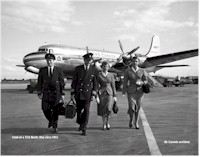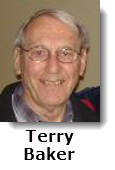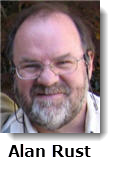 This is what it was like to fly in the 1930s
This is what it was like to fly in the 1930s
(Submitted by: David Bellamy )
While mankind’s foray into flying began in the early 20th century, the modern air travel industry as we know it didn’t truly grow its roots until the 1930s. As metal planes returned home from post-war posturing, a boom in passenger interest and sufficient technology to reach a slew of international destinations made the 1930s the start of something big. But like any major technology, commercial flight didn’t come without growing pains. If you think you have a lot to complain about now when it comes to air travel, take a look at what it was like to fly in the 30s.
 A New Career Begins
A New Career Begins
I decided to retire while recovering from (successful) back surgery in the Spring of 2015. I had reached the thirty-five-year milestone and still enjoyed my job and the company of my colleagues but I was tired of checking my work schedule to plan my life. I want to indulge myself in the pastimes that I enjoy such as working on web sites and travelling to Cribbage tournaments as well as seeing more of our planet.
So I chose to work out the rest of the year and begin 2016 as a retiree. I attended an I.A.M. Retirement Seminar in early December and left with my decision reinforced. The company and our pension plan are in excellent shape; the time is right. However, I still wondered how I was going to react my last day as an active employee.
As it happened, my last full working days were Christmas and Boxing Day of 2015, followed by four days off with the last official day being New Year’s Eve. The usual ceremony of cake and coffee had been prepared and I was asked to be there for 13:00. I arrived at the Ops Centre early (as usual) and did something that I had been doing subconsciously for years; I slipped a lanyard with my R.A.I.C. pass and key card over my head.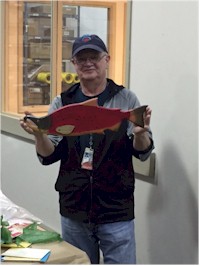
Inside I was greeted by warm smiles, handshakes, hugs, congratulations and thoughtful gifts (including a "fishy" looking Cribbage board - see photo). So now I knew how it felt. No sadness, no regrets, only precious memories of the wonderful people I have been so lucky to work with. Thanks to everyone.
As I pulled the lanyard over my head to hand in the attached cards and then slipped the now empty lanyard into my pocket; I felt like a puppy let loose in the off-leash park for the first time.
I am looking forward to my retirement career. I do not miss the past but I hope that we can make history new again and celebrate our past together.
 Thanks to Alan and Terry for the opportunity to do so via the NetLetter and thanks to all our readers for your kind attention and feedback. It’s a pleasure to meet you and begin many new friendships.
Thanks to Alan and Terry for the opportunity to do so via the NetLetter and thanks to all our readers for your kind attention and feedback. It’s a pleasure to meet you and begin many new friendships.
Heard on the air waves.
Lost student pilot: "Unknown airport with Cessna 150 circling overhead, please identify yourself."
Tower: Have you got enough fuel or not?
Pilot: Yes.
Tower: Yes what?
Pilot: Yes SIR!
Air Canada has assembled information on their baggage policies, as well as details on their products and services. It is their hope that you’ll use this information to plan and personalize your trip with them, and create your ultimate travel experience.
For complete baggage information see the Baggage Guide by following this link or by clicking on the image below. You can then use the links on that page to visit various other information more related to what information you are attempting to retreive such as the baggage fee calculator at www.aircanada.com/en/travelinfo/airport/baggage/checked.html and entering your flight information.
Another source for baggage information can be retrieved from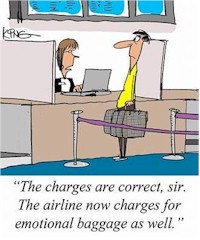 the web site at: www.seatguru.com which provides a more simplified version of Air Canada's baggage policies see: www.seatguru.com/airlines/Air_Canada/baggage.php
the web site at: www.seatguru.com which provides a more simplified version of Air Canada's baggage policies see: www.seatguru.com/airlines/Air_Canada/baggage.php
Other Airline info can also be retrieved from www.seatguru.com/browseairlines/browseairlines.php
(Note: John Shea sent us the timely related cartoon on the right via his niece Karen Shea Gleason.)
Airline Club of Thailand Presents Japan 02 - 08 - April 2016.
Journey to the Land of the Rising Sun, to breathtaking scenery from the cities to the country side. Enjoy a feast of attractions with the seven day tour.
Prices are per person :
- Double /TWIN Sharing USD 2,700 (15pax) Single supplement USD 380
- Extra night in Tokyo USD 160 per day approx.
- In Osaka USD 140 per day approx.
Price confirmed based on :
- 6 nights accommodation as quoted or similar.
- Meals include 6 breakfasts 5 lunches, 6 dinners.
- Long distance coach and Shinkansen (Bullet Train)
- Accident insurance liability withinTHB 2,000,000 equivalent to approx USD 60,000.
- Tours as per itinerary.
- English speaking guide.
- In case of currency fluctuations of more than 3% we reserve the right to adjust the tour price.
Excluded-
- WACA fee of USD 20
- Tips for all local services (driver, local guide, porters) approx USD 6 per day per person
- Deadline to register - March 1st, 2016.
Interline Clube de Portugal will host the 1st WACA FUN GAMES.
- 19th - 23rd Apil 2016 at Vilamoura - Algarve, Portugal.
- Cost eur370.00 Deadline March 15th 2016
- Check www.waca.org events for full details.
Heathrow celebrates its 70th anniversary in 2016.
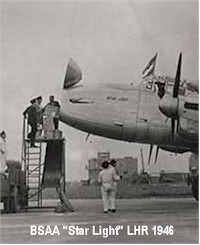 December 31, 2015 marked 70 years since Heathrow officially became a commercial airport. Over the course of 2016, Heathrow will be celebrating a number of key moments with colleagues, passengers and the local community to mark this significant anniversary. May 31 is the official date of Heathrow’s birthday – marking 70 years since the then newly named London Airport officially opened for civilian aviation. Heathrow was originally built for military purposes during the Second World War and was handed over by the Air Ministry to the Minister of Civil Aviation on January 1, 1946.
December 31, 2015 marked 70 years since Heathrow officially became a commercial airport. Over the course of 2016, Heathrow will be celebrating a number of key moments with colleagues, passengers and the local community to mark this significant anniversary. May 31 is the official date of Heathrow’s birthday – marking 70 years since the then newly named London Airport officially opened for civilian aviation. Heathrow was originally built for military purposes during the Second World War and was handed over by the Air Ministry to the Minister of Civil Aviation on January 1, 1946.
The first commercial flight to depart was a British South American Airlines Lancastrian ‘Star Light’ which flew to Buenos Aires on New Year's Day 1946, with the then London Airport opening to passengers the following May 31st.
Since its opening, the UK’s only hub airport has grown significantly to handle over 73 million passengers annually.
A brief History of Heathrow
- 1944: Construction of London Airport's runways begins
- 1946: London Airport officially opens as a commercial airport
- 1955: Her Majesty the Queen opens the Central Terminal Area and Control Tower
- 1957: The first non-stop flight to California sets a new record for distance and time
- 1964: The Beatles are mobbed at London Airport
- 1966: The British Airports Authority is created. London Airport is renamed 'Heathrow'
- 1969: Terminal 1 is opened and existing buildings renamed Terminals 2 and 3
- 1976: Concorde makes its first passenger flight
- 1977: The London Underground link is opened
- 1986: His Royal Highness Prince Charles and Princess Diana inaugurate Terminal 4
- 1987: The British Airports Authority is privatised as BAA plc
- 1997: The Terminal 5 public planning inquiry ends – the longest in UK history
- 1998: The Heathrow Express rail service is launched
- 2003: Three Concorde’s make their final touchdown at Heathrow
- 2006: The Airbus A380 makes its first UK landing into a newly built Pier 6 at Terminal 3
- 2007: A new air traffic control tower is operational – the tallest in the UK
- 2008: Terminal 5 is officially opened by Her Majesty The Queen in March; The first commercial A380 flight arrives at Heathrow
- 2009: Terminal 4 underwent a major refurbishment to improve facilities
- 2010: Demolition work started on Terminal 2 to make way for its £1 billion replacement which opens on 4 June 2014
- 2014: The brand new Terminal 2: The Queen's Terminal opened for business on 4 June. The first airline to move in was United Airlines
- 2015: Icelandair moved in to Terminal 2 on 25 March
- 2015: Terminal 1 closed






